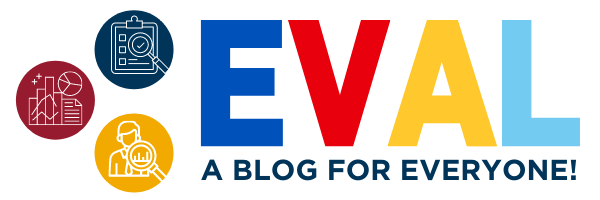Best Practices for Writing Multilingual Surveys

Best Practices for Writing Multilingual Surveys
Across our programs, we work with a lot of people, from students to their parents, from teachers to members of the community. When we work with so many folks, we also work with many languages. When we are trying to learn more about the experiences of non-English speakers, we try to tailor our evaluation tools to reflect the languages spoken by our clients and participants, whenever possible. This approach to survey development helps break down the barriers that keep many non-English speaking participations from sharing their valuable feedback. This can be a tricky task for a lot of research methods, but one area where we’ve found success is with online surveys. So, if you are looking for more feedback and better-quality data from your research, here is a guide to writing multilingual surveys.

What a multilingual survey can offer
Multilingual survey writing can offer a lot of benefits for both the respondents and the evaluators. When we try to meet people at their own language, our goal is to make it easier and more comfortable for participants to provide their most genuine feedback. Making it easier for participants to answer in their home language also makes it much more likely they will complete the survey they’re working on. Multilingual surveys give great benefits for higher participation rates and better answers with more details.

Getting started with the right questions
When starting a multilingual survey, there are some basic questions you can ask yourself to get going. A simple starting question is: who is your audience? Beginning with an understanding of who you are surveying will help you understand what languages you will need to translate from, what different variations you may need to use based on regional dialects, and even what kinds of questions may be most useful depending on who you are asking. For example, in our work with local school districts, we’ve begun offering surveys in Spanish, with Americano dialects, Russian, and Ukrainian, to better reach recent migrants and asylum seekers.
The next step to starting a survey, is beginning it in one language. This way, you have a chance to fully build out your survey before translating it to others. This is also a good time to pick survey questions that follow a similar design (Likert scaled answers, for example) or to try open-ended questions that give your participants a chance to express their thoughts in their language. Even starting from a place of using more common, simplistic vocabulary can make a big difference and help your survey be easier to translate.

Using translation software, then double-checking
Translation software, which makes multilingual survey writing accessible to more people than ever before, is also one of the trickiest elements of making sure you are writing a good and cohesive survey. There are multiple translation softwares out there, ranging from the most general, like Google Translate, to language specific services, like SpanishDict.com, or, given the budget, paid services like Propio. They will all work for basic translation, but make sure to carefully check your translations because sometimes a direct translation can be misleading based on how the language is used by speakers.
This is where double-checking becomes very important. Try running your translation back to your original language and see how it reads, or try using other translation softwares to double-check. On our team, we are lucky to have several multilingual speakers, who are able to help us with translations. This is a best-case scenario for doublechecking our translations. If you don’t have access to multilingual staff, you could even reach out to your participants or target audience to ask for feedback and engage them in the evaluation process!

Once your survey is out there, keep testing it
The real test begins once the survey is released to the public. When the survey is “live” and data is actively being collected, check your responses as they come in and see what participants are saying. Do the answers seem to stay consistent or vary between different language groups? Are more people finishing the survey in one language than another? This valuable feedback can help you fine-tune a survey that’s already out there, as well as help you build information for future surveys.
We all know evaluation is a long-term process, and so is building a relationship with the communities you are trying to reach. Your first multilingual survey is a first step toward growing your evaluation to better meet more people where they are, but it won’t be the only one. Make sure to keep an open-mind, be open to reworking your survey tools, and listen to the feedback you get from the people you’re surveying. And good luck with your next multilingual survey!
P.S. Please, just like with your translations, double-check my work with some other best practices guides! Here are some articles that helped me with this blog, I hope you enjoy and good luck with your evaluation!
- “How we translate survey questions to be fielded around the world,” by Ariana Monique Salazar, Jonathan Evans, and Neha Sahgal, PewResearch.org
- “Multilingual Survey Design and Fielding: Research Perspectives from the U.S. Census Bureau,” Yuling Pan, Jennifer Leeman, Marissa Fond, and Patricia Goerman, U.S. Census Bureau
- “Multilingual Surveys: Benefits, Examples & Best Practices,” by Moradeke Owa, FormPlus.us

Contributed By Michael L. Klein-Thibodeau
Michael L. Klein-Thibodeau is an Assistant Researcher for the Research, Evaluation & Dissemination Department at the Center for Educational Opportunity Programs. He currently works on National Professional Development (NPD) Program grants, as well as assisting with Title III evaluations.
Follow @CEOPmedia on Twitter to learn more about how our Research, Evaluation, and Dissemination team leverages data and strategic dissemination to improve program outcomes while improving the visibility of college access programs.